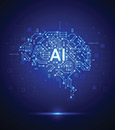 Artificial intelligence (AI) is rapidly transforming everyday life. But what can it do for nonprofit organizations? And do the potential benefits outweigh risks and costs? This short article looks at the issues.
Artificial intelligence (AI) is rapidly transforming everyday life. But what can it do for nonprofit organizations? And do the potential benefits outweigh risks and costs? This short article looks at the issues.
Possible advantages
AI software is now used for a wide variety of purposes — including machine learning, large language processing and predictive analytics. Nonprofits have integrated AI into their operations to, for example, create personalized email campaigns based on past donor behavior and build predictive models identifying future community needs.
The primary advantages of using AI generally fall under the following categories:
Streamlining repetitive tasks. Nonprofits often are run by a lean staff. AI can help reduce your staff’s workload and free up time for mission-critical activities by automating administrative duties. These include scheduling, data entry, expense tracking and email follow-ups. Chatbots may be able to handle routine donor inquiries, and AI-powered grant management systems can sift through eligibility criteria — often more efficiently than humans.
Reducing costs. By automating manual processes, AI may significantly reduce your operational costs. Predictive analytics can optimize staff scheduling, thus reducing overtime and improving retention rates. AI can also analyze donor databases to identify patterns that would otherwise require hiring expensive consultants. Over time, such efficiencies can deliver substantial savings while improving outcomes.
Engaging Donors. AI excels at personalization — critical for engaging donors. With the right tools, you can segment supporters, predict giving patterns and deliver tailored messages. AI-driven platforms can suggest the most effective timing and channels for outreach, increasing the likelihood of repeat donations.
Potential drawbacks
AI adoption carries risks. AI algorithms have been known to perpetuate bias unintentionally, leading to inequitable service delivery and donor targeting. So transparency is essential. You’ll need to inform stakeholders when you use AI for decision-making and communications.
Keep in mind that reliance on automation could raise questions among your staff about job displacement. Data privacy and security are also pressing concerns, especially when handling sensitive donor information. If you adopt AI tools, increase data security protections.
Then there’s the cost. You’ll need to budget for software subscriptions, training and integration with existing systems. Pilot programs may be the best option because they enable you to test tools on a small scale before making a larger investment.
Values and fiscal limitations
By reducing repetitive tasks, cutting costs and deepening donor engagement, AI can strengthen your organization. But be sure to manage AI risks thoughtfully. Ensure the technology you choose aligns with your organization’s values and fiscal limitations.




